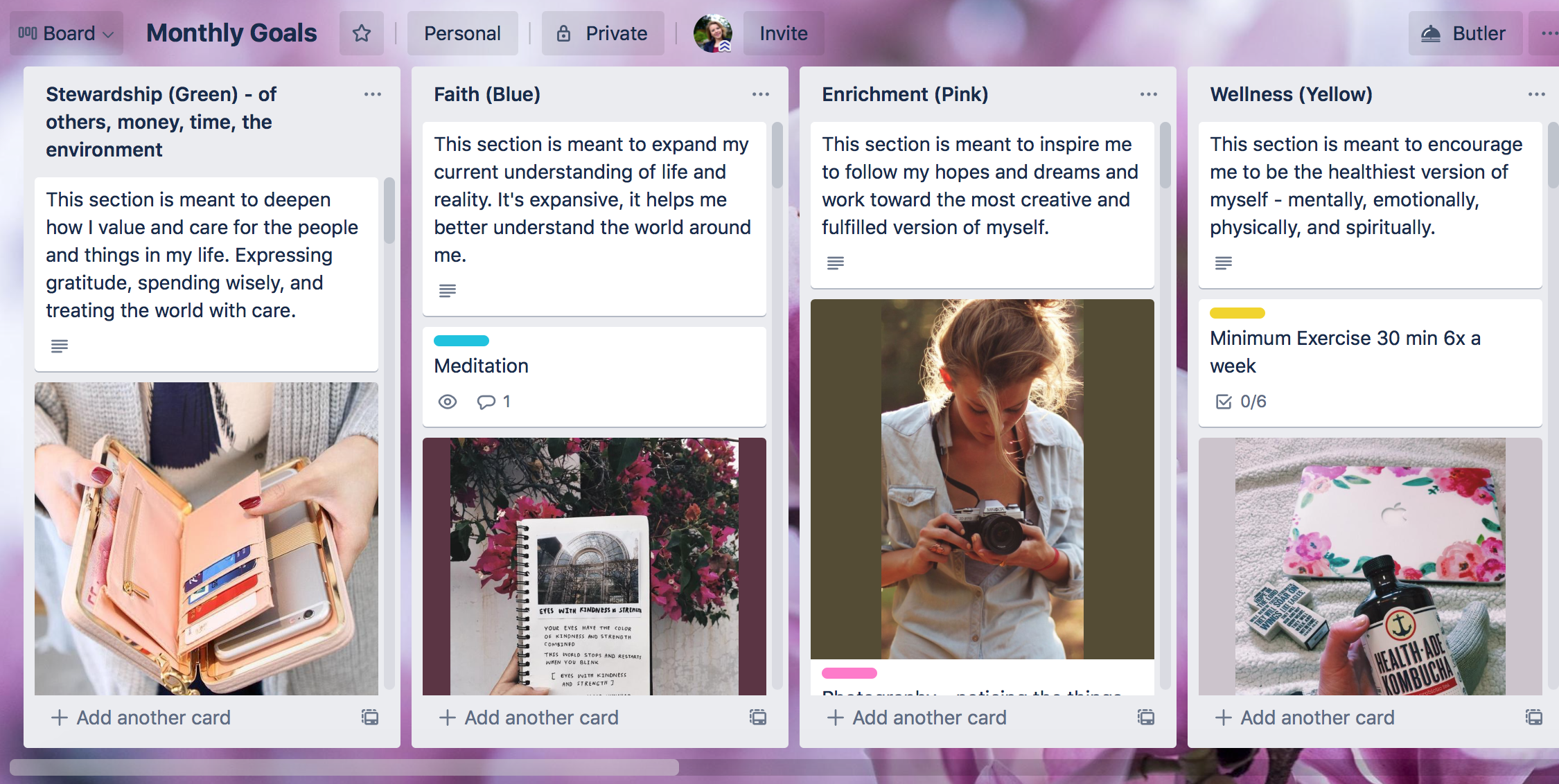
There’s nothing like the start of a new year. A champagne toast, a firework-lit sky, the chance to become a newer and better version of myself—all of this makes New Year’s my all-time favorite holiday.
Every year, my favorite way to spend New Year’s Day is sitting cross-legged on my bed with my laptop balanced perfectly on my lap, plugging through my annual life audit. While it may sound drab compared to a daylong ski trip or a visit to the movie theaters, these annual life audits have not only become a beloved tradition in my life, but they’ve also helped me assess my goals, dreams, and lifestyle to help me become the person I intend to be.
This year, I encourage you to start your year off right with a comprehensive life audit. Read ob to learn how to create your own audit, and how it can help bring clarity, balance, and intention into your everyday life.
What is a Life Audit?
Simply put, a life audit is a review of your present, past, and future to make sure your life is on track. Life audits are a helpful exercise to see what’s working and what’s not, along with how you can take tangible steps to embody the life you desire. While there are many different ways to complete a life audit, this is the process I’ve used each year to make sure my life matches the goals I have.
Step One: Ask The Questions
 While many life audit blogs jump right into the process of goal-setting, I find it difficult to know what goals I want to accomplish without first introspecting about who I am and what I’m most passionate about. In my process, I start first by asking myself the following questions, to discover what I care most about:
While many life audit blogs jump right into the process of goal-setting, I find it difficult to know what goals I want to accomplish without first introspecting about who I am and what I’m most passionate about. In my process, I start first by asking myself the following questions, to discover what I care most about:
- What is my elevator pitch for who I am and what I love to do?
- What are my top ten characteristics and key descriptors? What do I want them to be?
- What are my top ten skills? Am I using them?
- What am I most passionate about?
- What makes me different?
- Who are my biggest inspirations?
- What are my personal and professional goals in this upcoming year?
- What do I want to be like in 5 to 10 years?
- What has brought me the most joy this past year?
- What are the four areas I want most to grow in?
After answering those questions, my next step is to turn those into a growth path by turning the “What” into a “How.”
After looking at my answer to “What do I want to be like in 5 to 10 years?” I next ask myself “How do I become what I want to be like in 5 to 10 years” and write that tangible goal(s) in a Google Doc or on an index card.
While you can have as many or as few goals as you want, I typically recommend following Warren Buffet’s 5/25 strategy and aiming for a list of around 25 goals (these should be specific, and can be as big as writing your first book to as small as mastering the art of the perfect sourdough bread).
Step Two: Assess Your Goals
While Warren Buffet recommends eliminating 20 goals to leave 5 remaining, I prefer to take my goals and group them into four or five categories instead. These categories can and should be more vague than the goals you originally listed. Examples categories include:
- Wellness + Health
- Community
- Spirituality
- Creativity
- Financial Stability
- Justice
- Travel
- Etc.
After identifying those top categories, make sure those feel like the proper categories to you. A quick way to check is to turn each category into “I Want To Be…” statements to make sure they’re aligned with the answers to your questions in step one. An example of this would be.
“I want to be a person who is emotionally, physically, and mentally healthy.”
If that statement still holds true and feels like a defining core value for your life, put a star next to it. If it’s not, go back to your list of goals and see if there’s another category that might be a better fit.
Step Three: Break Down Your Categories Into Actionable Steps

Now that you’ve identified the 4 or 5 most important categories for growth, the next step is to determine what short-term goals you can accomplish to get there. While there may be overlap with the 25 life goals you listed earlier, these goals should focus on things you can accomplish in a month with little to no prep work. (Ex. while a life goal might be to write a book, a short-term goal might be to write 1,000 words a day for a month).
For each of those 4–5 categories, I make myself a list of 12 monthly, short-term goals per category to keep myself on target each month. I personally recommend using Trello to keep all your goals organized, but you can use whatever management tool or journal tracker works best for you.
To give you some inspiration, some monthly goals I’ve used previously include:
- Spirituality—Meditate for 15 minutes every morning
- Wellness—Try a 3-Day juice cleanse (you can read about that here)
- Stewardship—Meet 4 new people in a month (one of these people wound up becoming my boyfriend)
- Creativity—Learn how to brew my own kombucha
While these goals may seem small and inconsequential, each reinforced my overarching categories of becoming a person who is faithful, creative, healthy, and stewardship-focused.
***
Life is made through daily habits and practice, and determining the type of person you want to become is the best way to get yourself there. Though the journey will be slow and hard, a life audit is a helpful tool to get yourself started on that journey of self-development and actualization.
This year, consider skipping the ski trip and movie theater visit on New Year’s Day, and sit down with a computer and pen to get started with your life transformation today.
Also by Dana: How Life In Quarantine Helped Me Cultivate A Growth Mindset
Get more like this—Sign up for our daily inspirational newsletter for exclusive content!
__
Photo: Dana Drosdick




